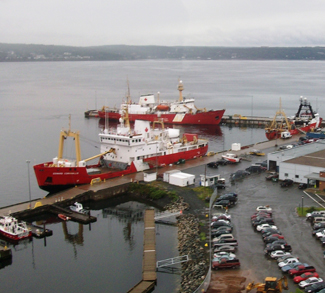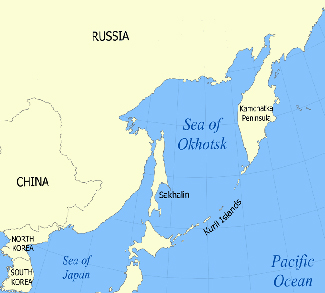Earlier this month, the China Coast Guard claimed to have entered the Arctic Ocean for the first time as part of a joint patrol with Russia. In mid-September, Russia and China launched “Ocean-24,” a large-scale naval and air exercise spanning the Pacific and Arctic Oceans. The drill involved over 400 warships, submarines, and support vessels, along with more than 120 aircraft and 90,000 troops. Around the same time, the North American Aerospace Defense Command (NORAD) tracked four Russian military aircraft entering Alaska’s air defense identification zone (ADIZ).
These recent incursions follow similar incidents from earlier this summer. In July, two Russian and two Chinese bombers flew within 200 miles of Alaska’s coast, and NORAD reported the aircraft crossing Alaska’s ADIZ. That same month, the US Coast Guard also identified Chinese military vessels operating near the Aleutian Islands, within the US exclusive economic zone. These actions highlight not only the deepening collaboration between the world’s second- and third-largest militaries but also a growing pattern of incursions into the Arctic, the Bering Strait, and waters near Alaska. This northward push appears to be part of China’s broader strategy to assert dominance in the Arctic.
China has declared itself a “near-Arctic state” as part of a broader strategy to gain influence in the Arctic, though this is a self-proclaimed title not officially recognized by Arctic nations or international bodies.
The Arctic Council, an intergovernmental forum, addresses issues faced by Arctic governments and indigenous peoples. The council’s eight member states, which exercise sovereignty over the lands within the Arctic Circle, are Canada, Denmark, Finland, Iceland, Norway, Russia, Sweden, and the United States. China, however, has only been admitted as an observer.
The Arctic Council’s work became more complicated following Russia’s invasion of Ukraine. At that time, Russia held the rotating chair of the council; however, soon after the invasion, the council issued a letter condemning Moscow’s actions and suspended all operations involving Russia. In 2023, the chair passed to Norway, and in 2024, Russia suspended its dues payments, though it did not formally withdraw. Even before the Ukraine war, the council’s work was hindered by Russia’s significant military buildup in the Arctic. Now, Russia’s expanding military cooperation with China in the Arctic further complicates the council’s ability to maintain regional security, freedom of navigation, and environmental protections.
China and Russia Arctic Policies Move Toward Convergence
Updates to Russia’s Foreign Policy Concept in 2023 place much greater emphasis on the Arctic, elevating it to the second most important geographic region after the “near abroad” (Commonwealth of Independent States – CIS). The shift is reflective of a general trend of Moscow focusing on domestic objectives over international cooperation. The Russia Arctic Policy 2035 outlines three primary goals, each of which could bring Moscow into conflict with other Arctic nations.
The first goal is to protect sovereignty and territorial integrity, a responsibility assigned to the Russian military. The Arctic now hosts Moscow’s Northern Fleet and nuclear-armed submarines in Kola Peninsula. The Kremlin aims to prevent any military force from threatening its Arctic interests while enhancing its combat capabilities in the region. Strengthening Arctic security is central to this goal.
The second objective focuses on developing the Arctic as a strategic resource base. Given that the Arctic already contributes 10% of Russia’s GDP and 20% of its exports, its economic significance is clear. The policy emphasizes the need for Russia to maximize its ability to exploit natural resources in the Arctic to safeguard national security and economic well-being.
The third goal of Russia’s Arctic policy is to establish the Northern Sea Route as a key global transport artery between Europe and Asia. An explicit link is made between control over the Northern Sea Route and Russia’s claims regarding Arctic sovereignty and territorial integrity, and this manifests in envisioning stricter regulations on foreign vessel transit. For instance, Russia has imposed new limitations on foreign warships using the Northern Sea Route.
Lastly, the policy aims to minimize the influence of Western-led forums like the Arctic Council, despite the fact that Russia continues to participate in them. Moscow remains open to cooperation but only with countries that respect its sovereign interests. Bilateral relations with non-Arctic states like China are also emphasized as a way to bolster Russia’s Arctic ambitions.
In 2018, China released its own Arctic strategy document, aiming to participate in Arctic governance, promote scientific research, and develop the “Polar Silk Road” to improve shipping routes between Asia and Europe. China’s involvement in Arctic affairs, especially through its partnerships with Russia, reflects its ambitions to secure access to resources and trade routes in the region, despite not having formal territorial claims or special rights. Over the past decade, China has invested over $90 billion in the region.
Partnering with Russia provides China significant legal advantages, particularly regarding access to the Arctic through Russia’s EEZ, which extends 200 nautical miles from its coastline, as established by the United Nations Convention on the Law of the Sea (UNCLOS). In the Bering Sea, which separates Russia and Alaska, the narrowest point of the Bering Strait is about 53 miles (85 km) wide. There’s additional ambiguity over the territorial agreement in the Bering Sea due to the Baker-Shevardnadze Agreement (1990), which delineated the boundary between the U.S. and the former Soviet Union. Although the U.S. recognized Russia as the USSR’s successor and agreed to maintain the same border, the Russian State Duma has yet to ratify the agreement. The US Senate ratified it in 1991 and continues to honor it, but the lack of ratification on Russia’s side creates uncertainty. Nevertheless, both countries generally adhere to the terms of the agreement, though under Putin, a growing faction within Russia rejects the status quo and pushes for a renegotiation.
US Arctic Policy
Historically, the Arctic has received limited attention in Washington’s defense allocations, likely because all nations with Arctic territorial claims, with the exception of Russia, have been US allies. Now, with Sweden, Finland, and Norway all joining NATO, the entire Arctic region is comprised of NATO members, further reducing the perceived threat level. Additionally, China was not seen as a significant military power until recently and has only developed an Arctic strategy over the past six years. Yet the geopolitics of the Arctic are clearly shifting as climate change makes its waters more traversable, and US Arctic policy increasingly looks like a laggard behind China and Russia, both of which afford the region greater strategic importance than Washington.
The US National Strategy for the Arctic Region for 2022-2032 focuses on four pillars: security through enhanced defense capabilities; addressing climate change by partnering with Alaskan communities to build resilience; promoting sustainable economic development in Alaska and across the Arctic; and upholding international cooperation and governance, particularly through the Arctic Council. The strategy also emphasizes deepening ties with Arctic allies and partners, planning for long-term investments, fostering cross-sectoral coalitions, and ensuring a whole-of-government approach to Arctic challenges.
In 2019, President Donald Trump proposed the idea of the U.S. purchasing Greenland to enhance national security, a suggestion that was widely mocked by the media. However, Greenland holds tremendous geopolitical and strategic value, particularly regarding Arctic defense. Acquiring Greenland would have allowed the United States to militarize the island without needing visas, permission, or paying rent to a foreign government, as is currently the case with the US presence at Pituffik (formerly Thule) air base on the western coast of Greenland. Additionally, control of Greenland would have extended the US EEZ by 2.1 million square kilometers, adding significant Arctic and North Atlantic waters to US jurisdiction. This would have expanded US control over valuable resources such as fishing grounds, oil, natural gas, and shipping lanes.
While the United States missed this opportunity to increase its Arctic security (if it was ever remotely on the table to begin with), one positive takeaway here is that Greenland, as part of Denmark, is included in NATO. Since the start of the Ukraine war, NATO has increased cohesion and military spending, releasing its most comprehensive defense plans in decades in 2024. At the Arctic Circle Assembly in October 2023, NATO Military Committee Chair Admiral Bauer highlighted concerns over growing competition and militarization in the Arctic, particularly by Russia and China, as melting ice opens new sea routes. He outlined NATO’s Regional Plan North, focusing on the Atlantic and European Arctic, coordinated through the Allied Joint Force Command in Norfolk, and stressed the importance of Arctic defense coherence and freedom of navigation. Bauer also praised the Arctic Circle Assembly as a platform for discussing the region’s security, natural resources, and climate change. It stands to reason that, as NATO bolsters its regional defense plans, the Alliance’s role in Arctic defense will become even more crucial in the face of rising threats from Russia and China.




